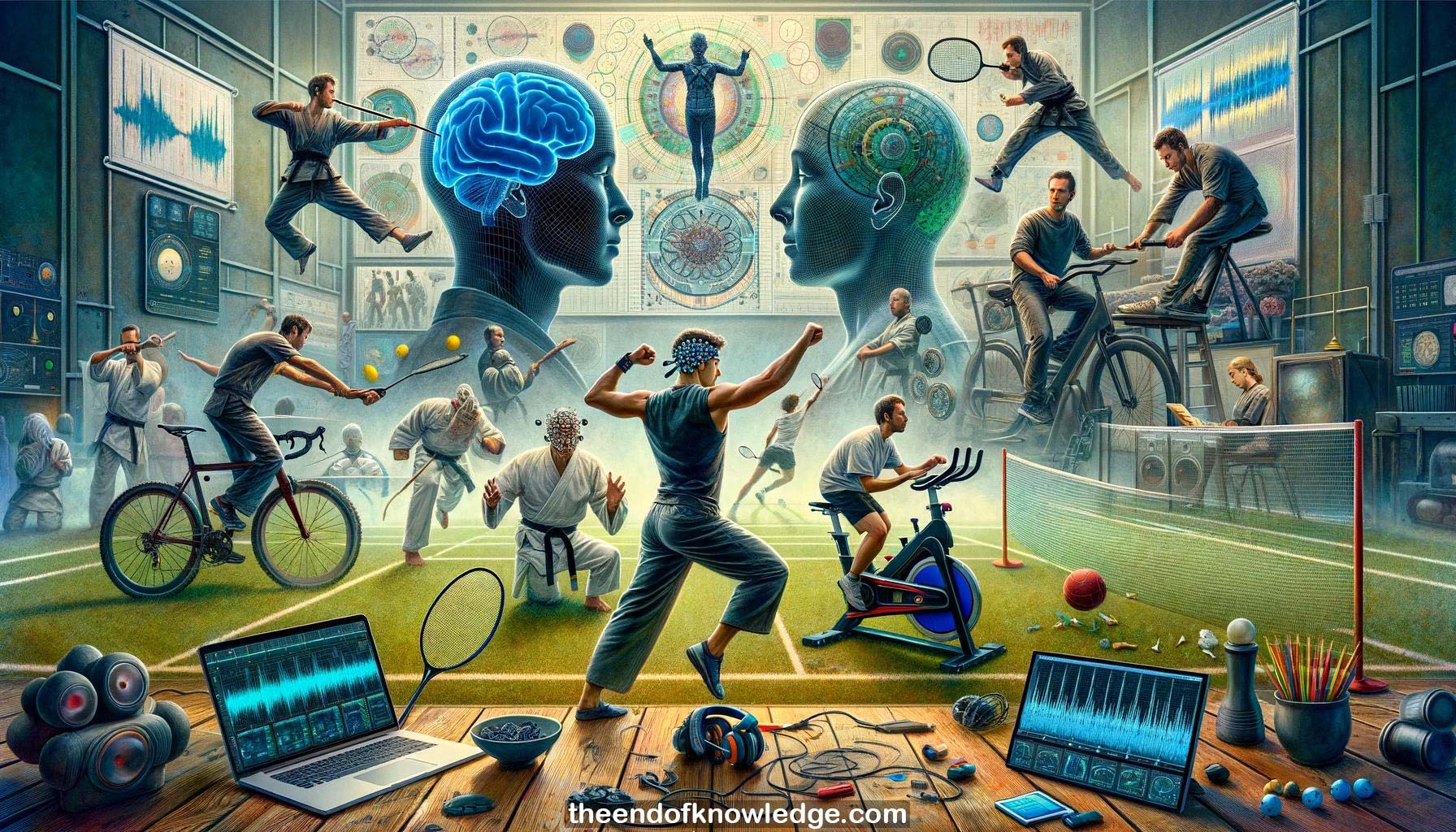 >
>
Concept Graph & Resume using Claude 3 Opus | Chat GPT4 | Llama 3:
Resume:
1.- Francisco Fernandes is presenting on EEG recordings and sports, a growing area of interest due to advancements in wireless EEG technology.
2.- Reasons to combine EEG and sports include measuring physiological responses during physical activity, comparing athletes to amateurs, and predicting/improving performance.
3.- Typical EEG markers used in sports studies are ERPs, motor imagery, spectral changes, sleep studies, respiration, GSR, EMG, EOG, and eye tracking.
4.- Challenges in sports EEG studies include movement artifacts, lack of concrete biomarkers/protocols, and technology limitations, so low-movement sports were often chosen.
5.- Wireless devices like unicorn allow free movement during EEG recording. Artifact removal tools are also beneficial for dealing with movement artifacts.
6.- One of the first sports EEG studies 7 years ago used a static bike, GUSB amplifier, and audio evoked potentials via headphones.
7.- In 2022, a wireless setup was used with a subject doing martial arts while wearing a GENO TILO's wireless device.
8.- Setup included EEG device, backpack, tablet streaming data via Wi-Fi, and a laptop providing audio stimulation and receiving data via UDP.
9.- In 2023, a badminton EEG study looked at alpha activity and concentration using G-nautilus 8 channels, D2 test, and real-time feedback.
10.- D2 test results were used to detect concentration levels from alpha/theta during badminton. Bar feedback indicated concentration level in real-time.
11.- For 2024, a unicorn with hybrid electrodes was tested, streaming data wirelessly from a tablet PC to a 2nd robust PC.
12.- Audio evoked potentials were elicited and data was streamed via LSL. Clear P300 peaks were seen despite movement, even with dry electrodes.
13.- Setup allows athletes to freely perform weight lifting, calisthenics etc. while verifying EEG signal quality. Audio stimuli can come from loudspeakers.
14.- Two Simulink models are used - one for unicorn data collection/LSL transmission, one for receiving data/triggers and processing (filtering, artifact correction).
15.- Raw data is shown on the left, artifact-corrected data on the right using OSCAR toolbox. Very clean data is obtained after correction.
16.- Various exercises are performed (squats, pushups, headstands) showing much cleaner data on the right after artifact removal compared to raw data.
17.- A backflip is performed, obliterating the raw EEG but the artifact-corrected signal still looks clean, demonstrating the effectiveness of the approach.
18.- Eyes closed shows clear alpha boost in both raw and corrected data. OSCAR artifact removal is embedded in the hardware for real-time use.
19.- Audio evoked potentials will be elicited while Martin performs movements. Two PCs can be used - one worn by subject, one stationary.
20.- For audio EPs, in-ear headphones are best but loud speakers are an option if headphones are too restrictive for the athletic activity.
21.- Visual/tactile stimuli for EPs are possible in sports studies but more complicated since vision is often required. Auditory is more feasible.
22.- Some technical glitches encountered trying to record EPs in real-time during the live demo. Prior day's recording is shown instead.
23.- Without artifact removal, raw EP averaging is severely compromised by movement. OSCAR provides clear EPs in real-time during motion.
24.- Future opportunities abound for wireless EEG and real-time artifact removal in sports science studies and applications. More spring school demos planned.
25.- Questions are addressed: Reproducing leg movement from treadmill running EEG is feasible. Visit YouTube for missed live session recordings to earn certificate.
26.- Comparing EEG of pro gamers to traditional pro athletes would be an interesting eSports study to examine differences in elite brains.
27.- The artifact removal combines adaptive filtering with steep anti-aliasing and oversampling. Simultaneous visual/auditory ERPs in a session may be problematic.
28.- Motor imagery shows higher accuracy in athletes vs non-athletes, likely due to their greater practice with imagined action for sports performance.
29.- The painting behind the presenters was made by Dragan Ilic using a brain-controlled robot during a 5-day Ars Electronica event.
30.- Christoph bartered a BCI system to Dragan in exchange for the large painting, which Dragan can borrow back for exhibitions as needed.
Knowledge Vault built byDavid Vivancos 2024